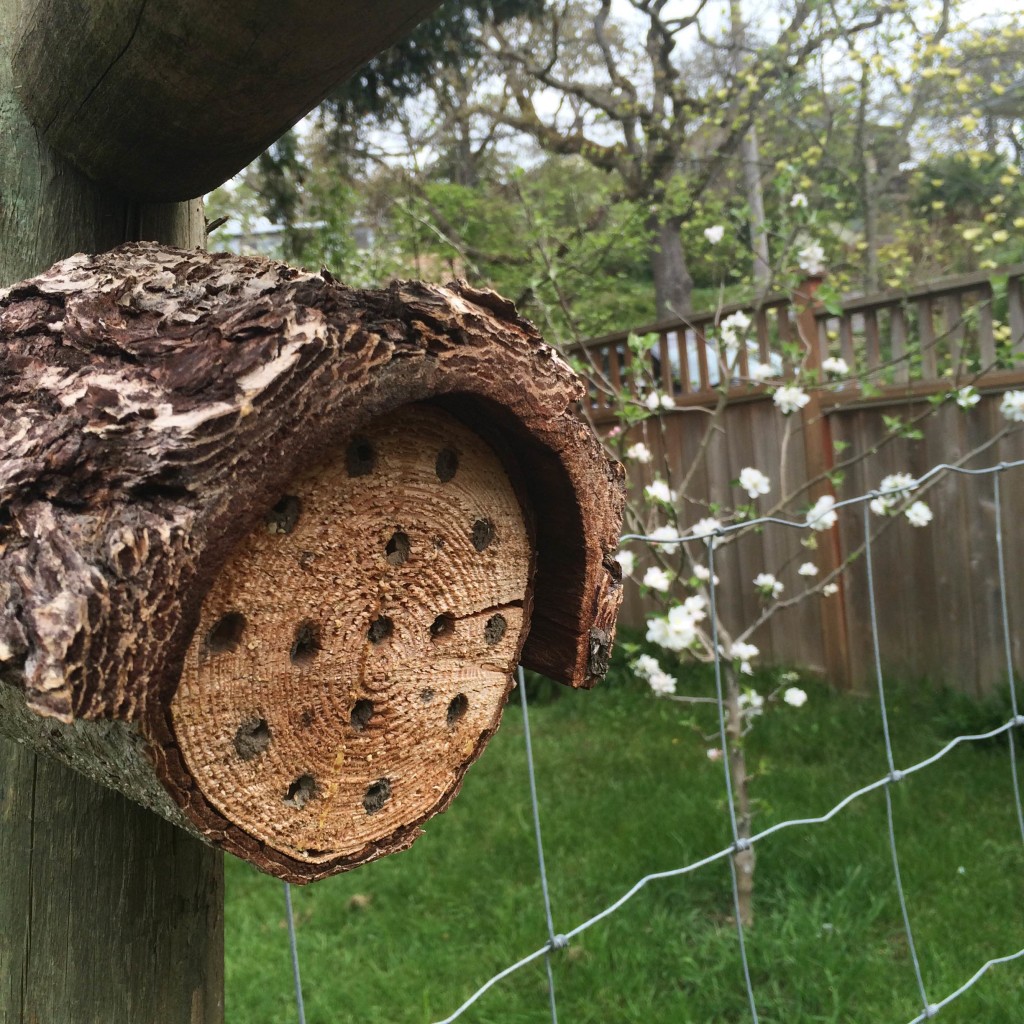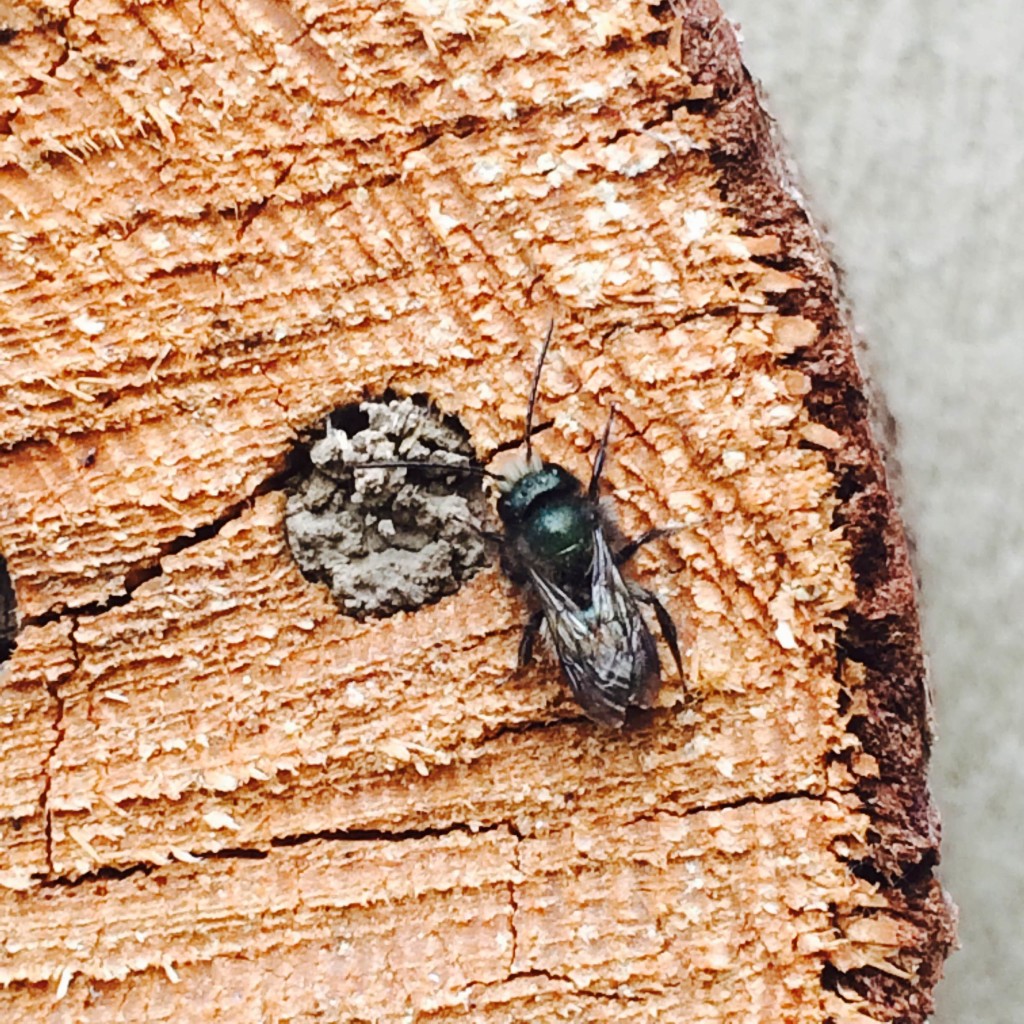Spring is in the air and the honey bees are out in full force. There is another type of bee buzzing around the yard as well though – the mason bee. Mason bees should not to be confused with Masonic Bees, (a special order of bees that hold meetings in a secret hive and have a bunch of elaborate handshakes). Mason Bees are another member of the bee family, similar but different from their cousins honey bees and bumble bees.

blue orchard mason bee (osmia lignaria)
Mason Bees are solitary bees, meaning that they live alone and as a result, they don’t make any honey. Mason bees are one of the species of pollinators native to North America. Before honeybees came over from Europe, native species, like the mason bee did all the pollinating work which allowed flowers and plants to produce berries, vegetables and fruit. The blue orchard mason bee (pictured) is a wild bee, native to British Columbia.
But what is the point of keeping mason bees at your house if you don’t get any honey? Mason bees are fantastic pollinators, so if you have any fruit trees, or gardens, they are excellent for making sure your fruits and vegetable flowers get pollinated and that you get some food. They are also very shy and gentle and so you won’t have to worry about getting stung.
Additionally, they are extremely low maintenance and their homes are easy to make. If you are looking for a nature-y project, or something easy to build with your children – a mason bee house is an excellent project.
I like to take an old, dry piece of fire wood and cut it to about 4 or 5 inches long. Then get a 5/16 drill and drill some holes into the wood (but not all the way through, leave about a half inch at the back). Get a piece of bark, or something that will provide a bit of shelter and attach or glue it to the top. Hang it 4-8 feet off the ground on a south facing wall and voila – you have a mason bee house. With any luck, you will soon start to see little green visitors coming by and checking it out from March to June. They will lay their eggs in the drill holes and fill up each cell with a mud plug. Hence the name mason bee.
Here is a link for some more directions and plans for building mason bee homes.
Mason bees are active from late March until around mid-June. For the rest of the year, they stay inside the little mud cells they’ve made cocoons in. They dream sweet dreams of spring flowers and wait for warm, sunny weather. Pretty decent life I’d say.


Hey Mum! Look what I made!